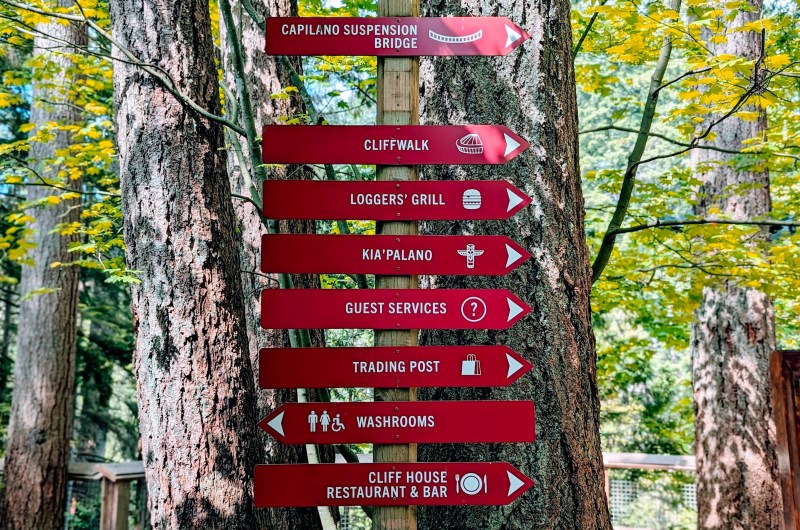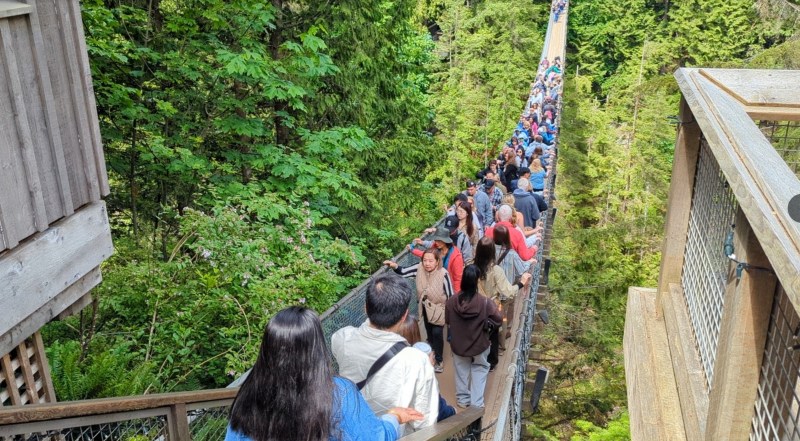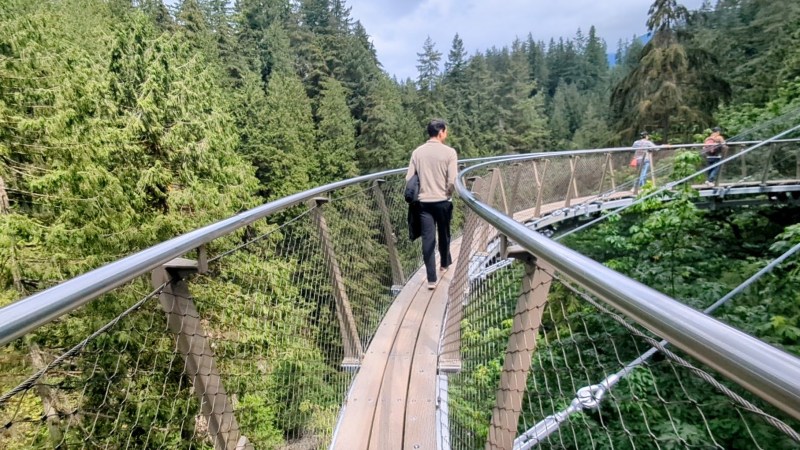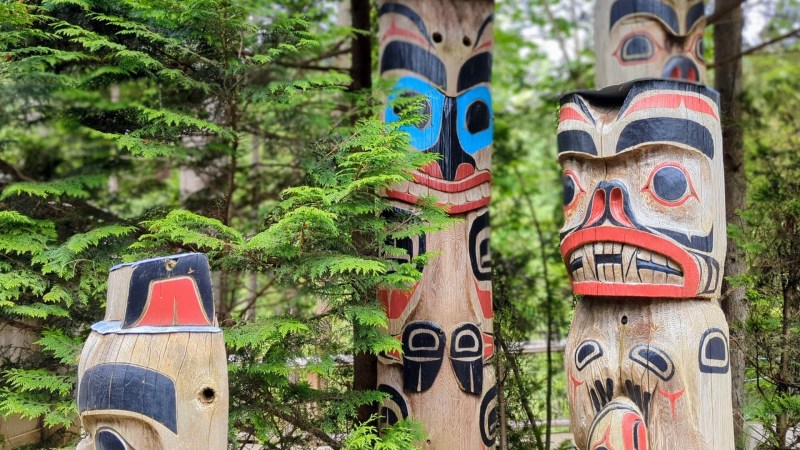Just 15 minutes outside of downtown Vancouver, B.C., you’ll find the Capilano Bridge, a 450-foot-long cedar-planked walkway placed 230 feet above the valley floor. While worth its own pilgrimage, the bridge is more than a one-hit wonder. It’s one of dozens of attractions in Capilano Suspension Bridge Park’s 27 acres of aerial walkways, carved totem poles, and mist-threaded rainforest.
The coveted Park pulls off something rare: immersive, big, nature paired with all the creature comforts a visitor could want. While most people come to cross the Capilano Bridge, I opted to explore the other impressive aerial structures and bridges on site, which are equally remarkable and have fewer crowds.
This Capilano Bridge travel guide offers helpful park information to assist you in planning your visit, as well as my top three highlights from my experience.
What to know before you go

I allotted a half-day to explore Capilano Suspension Bridge Park, but wish I had more time. Joining guided tours, enjoying a meal under the towering evergreens, and taking the time to learn about the land’s history from knowledgeable guides make this place ideal for a leisurely visit.
Here are the basics to help you prepare to spend as much time on the property as possible:
- Admission: Ranging from $24.95 to $71.95, with a $3 discount when purchased in advance
- Hours: Open daily, hours vary by season and typically range from 9:00 am to 9:00 pm
- Getting there: Drive ($8 parking lot), take public transportation, or ride the free Capilano shuttle from downtown Vancouver
- How much time to spend: The average visitor spends about 2.5–3 hours, and I recommend 4-6 hours
- Best time to visit: The park is quieter during early mornings and late afternoons for visitors avoiding crowds
- Best gear: Breathable layers, raincoat, small umbrella (it’s a rainforest, after all)
While an hour is enough time to brave the bridge, a full day allows for ample time to see, eat, hike, and learn without feeling rushed. There are several eateries onsite for stretching your legs and refueling. And don’t forget to try the curious “Otter Ball” dessert, a cake ball that’s a cult favorite, named after the local river resident.
Walking the Capilano Suspension Bridge

Let’s start with the main attraction, the Capilano Bridge itself. This stretch of sky is named after the Capilano River, an essential vein for a historic salmon run and a source of freshwater for Vancouver for over a hundred years.
The bridge has been in operation since 1889 and was initially constructed using a thick hemp rope. It has since been reinforced with steel cables that couldn’t even buckle under the weight of 75 adult elephants. Even with engineering safeguards in place, the bridge sways and bends in response to the movements of the wind, as well as the passage of its commuters.
Speaking of visitors, you can expect a lot of them. As you can see above, I’m just one of many hundreds of crossers. It’s fun to wobble your way across as everyone attempts to carefully place their footing, playing a game of weight displacement with strangers. Every minute or so, I paused to drink in views of the river’s crashing silver waves, lined with Douglas firs and cedars older than the bridge itself.
The bridge crossing was about 10 minutes in total with a slow-moving crowd, and you will need to cross back over to exit the park. Opt to cross with the masses, find a moment of solace during opening or closing hours to cross, or stay in the park all day to walk back and forth several times.
Exploring the Cliffwalk

The bridge left my heart fluttering, but the Cliffwalk set it soaring, with nerve-tingling views of the park situated 30 stories above the canyon. This is a long, narrow walkway constructed from grates, narrow planks, and suspended 360-degree viewing platforms. The razor-edge walk is surprisingly peaceful and safe, with protective plexiglass placed at any narrow turn.
I encountered far fewer visitors along the 700-foot aerial path, making it easier to take my time and soak in the mossy trunks and the murmuring river below. Mist-cooled branches and dramatic gorge rock faces intersect the walkway. It’s one of the best places to visit in Canada for a closer look at the country’s unique flora and mineral formations.
Stand under the towering Kia’palano totem poles

Not all activities in the Capilino Bridge park are about catching a wave of adrenaline—several attractions are designed to educate visitors on the land’s heritage. One artistic display is found in Capilano’s Kia’palano totem pole garden.
Walk through towering totems, some more than 50 feet high, commissioned by Wayne Carlick of the Tlingit/Taltan Nation and James Lewis of the Tsimshian Nation. While these are contemporary pieces, they reflect centuries of visual and spiritual symbolism, and they also reflect the First Nations’ deep connection to the land.
You’ll find interpretive signs and visual displays that illuminate the traditions and techniques of the First Nations people settled in the canyon, breathing deeper meaning and life into the wooden pillars along Canada’s west coast.




